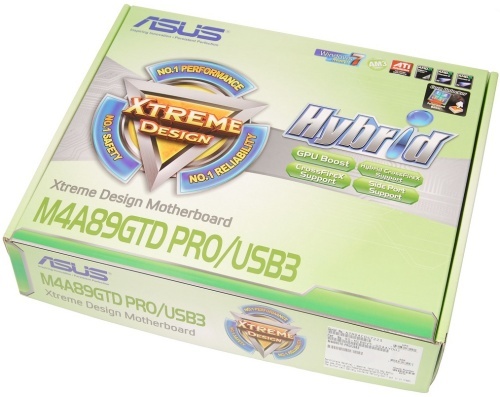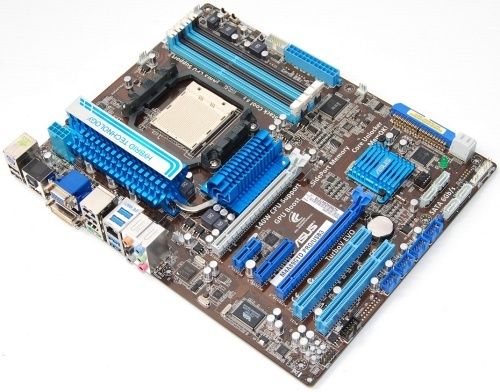Asus M4A89GTD Pro/USB3
The Asus M4A89GTD Pro/USB3 motherboard boasts of an impressive feature set, supporting literally every feature you could ask for. This usually translates into a price premium and although pricing has not been confirmed yet, we expect this model to sell for about $180.

Considering the most expensive Asus 790GX motherboard is currently the M4A78T-E ($140) we expect this new version that adds USB 3.0 will fetch a premium. That said, AMD claims that the average 890GX motherboard will cost just $110 at launch. While that remains to be seen, at that price point AMD could offer a better value than the Intel H57 and P55 motherboards.


As mentioned before, the 10-phase CPU VRM on the M4A89GTD Pro gives this motherboard future support for AMD Phenom II X6 hexacore processors that will carry a 140W TDP. The AMD SB850 south bridge provides six SATA (6Gb/s) ports, while an additional JMicron JMB361 controller offers an IDE connector and a single eSATA (3Gb/s) port.


Expansion slots include a pair of PCI Express 2.0 x16 slots (x8/x8 when both are populated), dual PCI slots, one PCIe x1 and one PCIe x4 slot. The full length x16 slots are separated by two expansions slots (PCIe x1 and PCIe x4), so users wanting to utilize Crossfire can have room to spare while losing these two ports.
The board's audio is taken care of by the Realtek ALC892 8-Channel HD Audio CODEC featuring optical and SPDIF outputs. This audio solution also features support for jack detection, multi-streaming and front panel jack retasking.

Gigabit Ethernet is provided by a Realtek 8111E controller which features the Asus AI NET2 function. This controller utilizes the PCI Express bus for maximum bandwidth. The M4A89GTD Pro/USB3 also incorporates two Firewire ports using the VIA VT6308P controller, one of which is located on the boards I/O panel.

As the motherboard's model name suggests USB 3.0 support is present. The two USB 3.0 ports are color coded blue and are driven by the NEC D720200F1 controller which connects directly to the 890GX north bridge chip for maximum throughput.


All the display connectivity minus DisplayPort can be found on the I/O panel (DVI, D-Sub, and HDMI). The I/O panel carries a single PS/2 port for legacy keyboards, 4 USB 2.0 ports, 2 USB 3.0 ports, 6 audio jacks, optical, S/PDIF, Firewire, eSATA and LAN.
Those seeking additional USB ports will be happy to learn that another 8 can be supported using headers. Surprisingly, Asus didn't include any expansion brackets with this motherboard however.

Asus included a VGA switch card which must be placed in the secondary PCIe 2.0 x16 slot if you want a sole primary graphics card to receive the full PCIe 2.0 x16 bandwidth. However, when we tested a single Radeon HD 5870 with this switch card installed and removed we noticed no difference in performance.